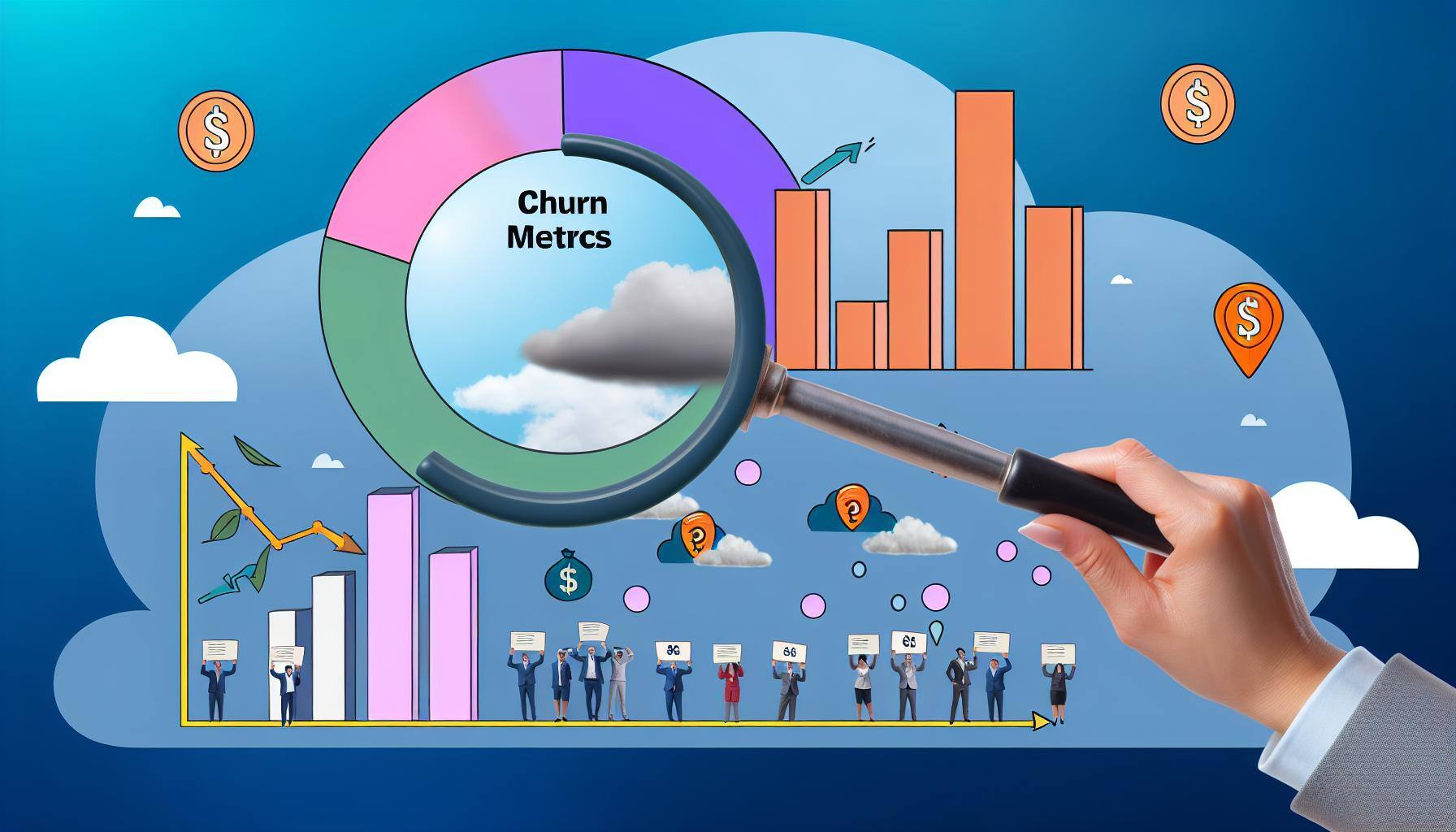A Guide to Understanding & Reducing B2B SaaS Churn Rates
In the competitive landscape of B2B SaaS, understanding and managing churn rates is crucial for sustained growth. Regularly reviewing churn rate...
2 min read
Brian Polackoff
:
Mar 25, 2024 10:27:00 AM

In the fast-paced world of Software as a Service (SaaS), understanding and monitoring the right metrics can mean the difference between soaring success and stagnant growth. For CEOs at the helm of SaaS companies, it’s critical to identify which metrics provide actionable insights into the health and trajectory of their business. This guide will explore the key metrics that SaaS CEOs should prioritize to drive informed decision-making and sustainable growth.
Why it Matters: MRR and ARR are the lifeblood of any SaaS business, providing a snapshot of predictable revenue generated from subscriptions. These metrics offer a clear view of financial health and growth trends.
How to Use it: Track MRR and ARR growth over time to assess the effectiveness of sales and marketing strategies. Accelerations or decelerations in these metrics can indicate when adjustments are needed.
Why it Matters: CAC measures the total cost of acquiring a new customer, including all marketing and sales expenses. Understanding CAC is crucial for evaluating the efficiency of your acquisition strategies and ensuring sustainable growth.
How to Use it: Balance CAC with the lifetime value of a customer (LTV) to ensure a healthy return on investment (ROI). A general benchmark is aiming for an LTV:CAC ratio of 3:1 or higher, indicating that you’re generating significantly more revenue from a customer than the cost to acquire them.
Why it Matters: LTV estimates the total revenue a business can expect from a single customer account throughout their relationship. This metric helps in understanding the long-term value of customer segments and guiding retention strategies.
How to Use it: Increase LTV by enhancing product value, improving customer satisfaction, and implementing upselling or cross-selling strategies. Monitoring LTV in conjunction with CAC provides insights into the overall efficiency and sustainability of your business model.
Why it Matters: Churn rate, the percentage of customers who cancel their subscription within a given period, directly impacts MRR, ARR, and LTV. It’s a critical measure of customer satisfaction and product-market fit.
How to Use it: Aim to minimize churn through customer feedback loops, proactive customer support, and continuous product improvement. Understanding the reasons behind churn can also inform targeted retention strategies.
Why it Matters: NPS gauges customer satisfaction and loyalty by asking how likely customers are to recommend your product to others. It's a proxy for gauging customer satisfaction and predicting business growth.
How to Use it: Use NPS feedback to identify areas of improvement and monitor changes in customer sentiment over time. A high NPS can be leveraged in marketing materials, while a low NPS signals the need for immediate action to address customer concerns.
Why it Matters: This metric tracks revenue growth from existing customers through upsells, cross-sells, and upgrades. It’s an important indicator of how well your business is capitalizing on its current customer base.
How to Use it: Drive expansion revenue by identifying opportunities to add value to your customers' experience. Tailoring product offerings based on customer usage patterns and feedback can uncover new revenue avenues.
For SaaS CEOs, these metrics are not just numbers on a dashboard; they are insightful indicators that can guide strategic decision-making and drive growth. By closely monitoring MRR, ARR, CAC, LTV, churn rate, NPS, and expansion revenue rate, CEOs can gain a comprehensive understanding of their business performance. Leveraging this data effectively requires a blend of analytical rigor and strategic vision to ensure that every decision is informed and every opportunity for improvement is seized. Remember, the goal is not just to grow but to grow wisely, sustainably, and in alignment with your customers’ success.

In the competitive landscape of B2B SaaS, understanding and managing churn rates is crucial for sustained growth. Regularly reviewing churn rate...

For your Software as a Service (SaaS) company, churn—the rate at which customers discontinue their subscriptions—is a critical health metric. Since...

Importance of Churn Metrics for SaaS Companies In the competitive landscape of Software as a Service (SaaS) businesses, understanding and leveraging...